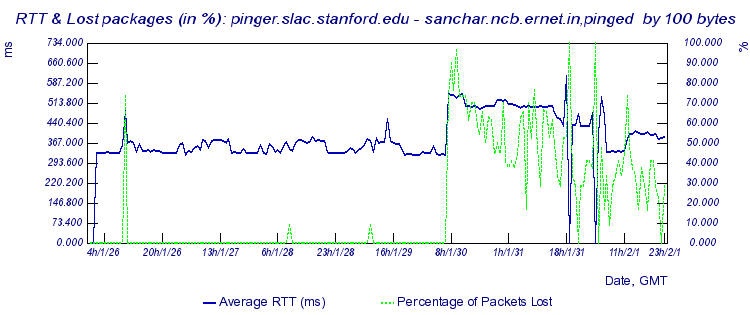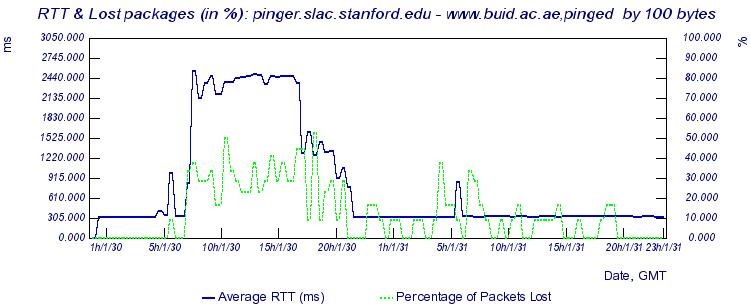...
Looking at the hourly ping losses (there are ~20 pings in an hour, so a loss of 1 ping is 5% loss) seen from SLAC for January 30th 2008 for large increases in losses which persisted to the end of the day (to avoid regular diurnal change, but unfortunately missing cases where the effect was removed by the end of the day, e.g. by re-routing), the main effects seen are shown in Table 1. In Table 1, the Loss before is the average loss before the outage, the Loss after is the loss after the outage started. The Sites affected is the number of sites monitored in the country that observed an effectseffect, the total is the total number of sites monitored in the country. It is interesting that in many cases not all hosts were affected. This may be due to use of different carriers. The impact of such losses can make many applications unusable.
...
An example of the effect is seen below for a host in Bangalore, India. It can be seen that the Round Trip Time (RTT) went from about 360ms to about 500ms and the losses increased dramatically from close to 0 to 40-60%. Closer inspection shows that for this connection the event occurred between 6:47 and 7:16 am January 30th, 2008 GMT. It appears that by the end of February 1, 2008, there were still significant losses for this site.
The Figure below for a host in the United Arab Emirates shows the impact of the cut and the recovery 15-20 hours later as the traffic was presumably re-routed.
Looking further into data by PingER we can estimate the approximate start time for this event. The exact time is a bit harder to explain but it is generally between 5 AM and 7 AM GMT on January 30th 2008 for most of the countries in table 1 with the only exception of Bahrain where it all started at 9AM. The differences might be due to the measurement sampling rate or monitoring host clock synchronization issues.
PingER calculates the throughput of different nodes from the Round Trip Time (RTT) and loss using the Mathis formula. It is interesting to see the effect on throughput of the regions suffered from fibre outage. Below is the table which gives us insight on the throughput of countries affected by this outage.
...

